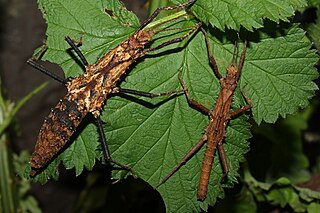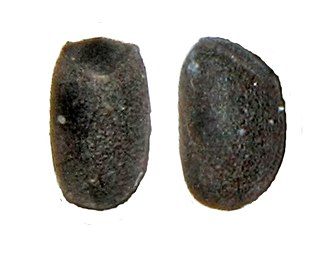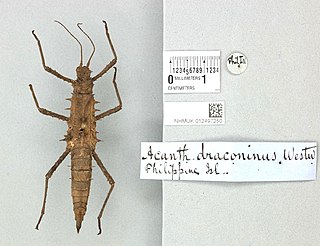
The Heteropterygidae is a family of stick insects belonging to the suborder Euphasmatodea. Species can be found in Australasia, East and Southeast Asia. More than 130 valid species have been described.

The Obriminae are the most species-rich subfamily of the Phasmatodea family Heteropterygidae native to Southeast Asia. It is divided into two tribe.

Datamini is the only tribe within the subfamily of the Dataminae from the order of the Phasmatodea. The representatives of this subfamily are on average not as large as those of the other two subfamilies belonging to the family of Heteropterygidae.

The genus Dares, which is mainly native to Borneo, combines relatively small and mostly dark-colored Phasmatodea species.

The genus Planispectrum combines very small and compact species from Southeast Asia.

The Obrimini are the most species-rich tribe of the Phasmatodea family of the Heteropterygidae native to Southeast Asia.

The genus Tisamenus native to the Philippines combines small to medium-sized species of stick insects.

Eubulides is a stick insect genus native to the Philippines.

Theramenes is a genus of medium-sized stick insects in the tribe Obrimini, which is native to the Philippines and to the Indonesian Talaud Islands.

Tisamenus serratorius is a stick insect species that occurs on the Philippine island Luzon.

Tisamenus deplanatus is a stick insect species native to the Philippine islands Luzon and Mindanao occurs.

Heterocopus is a monotypic stick insect genus, containing Heterocopus leprosus as the only valid species.

Stenobrimus is a genus of medium-sized stick insects native to the Philippines.

Haaniella saussurei is a species of stick insect native to Borneo and a typical representative of the subfamily Heteropteryginae. The occasionally used common name Saussure's Haaniella refers to the species name.
Pterobrimus is a monotypic genus of stick insects (Phasmatodea), containing the species Pterobrimus depressus, wich is native to Fiji.

Tisamenus draconina is a species of stick insect in the family Heteropterygidae native to the Philippines.

Tisamenus hebardi is a stick insect species (Phasmatodea), in the family of the Heteropterygidae endemic to the north of the Philippine island of Luzon.

Tisamenus armadillo is a stick insect species (Phasmatodea) in the family Heteropterygidae, endemic to the Philippines.

Tisamenus hystrix is a stick insect species (Phasmatodea), in the family of the Heteropterygidae endemic to the Philippines.

Tisamenus lachesis is a stick insect species (Phasmatodea), in the family of the Heteropterygidae endemic to the Philippine Polillo Island.



















